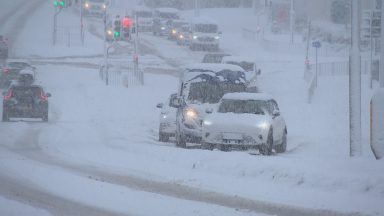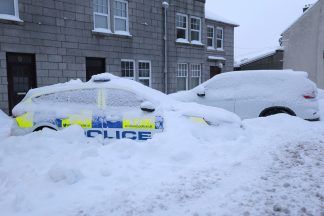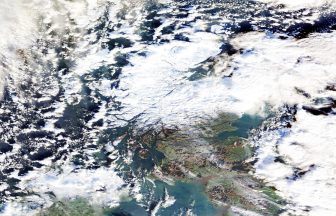While snowfall and frosted roads make for beautiful scenery, wintery weather also makes driving far more difficult and dangerous for even the most experienced drivers.
To help drivers across the UK be better prepared for driving in cold weather and reduce the risk of accidents, the experts at Rooster Insurance, an app-based provider, have shared some top tips for driving safely this winter.
Here’s a few tips to keep in mind – and don’t forget that under coronavirus restrictions, motorists should only head out on essential journeys.
Be prepared for the journey
It is important to prepare for your journey and do so diligently.
Even if it’s a short journey, pay close attention to the route and, if there are alternative routes available, try to avoid any exposed country roads.
You can also expect journeys in wintery weather to take longer than usual, both because congestion on roads is likely and driving more slowly is far safer in such conditions, so allow yourself more time to complete the journey.
Regardless of the length of your journey, it is a good idea to prepare an emergency kit to keep in your car for icy weather.
This kit should include winter driving essentials such as a de-icer, an ice scraper, water, a torch, jump leads and don’t forget a portable phone charger too.
Check your engine
Before you start driving in snowy conditions, it is important to make sure your car is ready for the journey.
When checking your engine, it is a good idea to consider changing your oil as this can reduce the risk of engine damage.
You can also mitigate the risk of damage by adding anti-freeze to the water in the engine’s cooling system – combining anti-freeze with water reduces the chances of a frozen or cracked engine.
Remember, slow and spacious
When it comes to driving in the snow or on icy roads, there are two key phrases to remember: drive slowly and allow space on the roads.
Particularly when you are driving uphill, keep as much space as possible between yourself and other cars on the road – this will help you to maintain a steady speed without having to suddenly change gears.
Stopping distances for cars can be ten times slower in icy conditions too, so make sure to drive slowly and carefully to avoid losing control of your vehicle.
Keep windscreens clear
Before you set off, make sure your windscreen is clean and clear.
A common mistake that many drivers make when trying to melt ice is pouring boiling water directly on to their windscreen – this can cause your windscreen to crack.
Instead, opt for useful tools such as de-icer and an ice scraper to clean your windows and, if you do need to use any water, allow time for the water to cool after boiling before pouring onto the windscreen.
Another top tip is to ensure that your engine is topped up with shop bought screen wash, which is far less likely to freeze than soapy water.
Keeping your windscreen clear in harsh conditions can be very difficult, even when you have taken precautions, so do not hesitate to pull over at available service stations, the leftmost lane on motorways or any safe stopping points on your route to allow time to demist your screen whilst driving.
Stay alert on slippery roads
The icier a road, the more slippery it is, a fact which is very daunting for many drivers.
As skidding is more common in such conditions, pay close attention to your steering and brakes – make sure both are as gentle as possible to avoid harsh movements or sudden jolts on the road.
It is likely that major roads will have been gritted to counteract skidding and whilst this is preferable for drivers, it is important to be aware of gritters and any vehicles spreading de-icer.
These vehicles may throw out grit on to your car, if you get too close, which can be distracting to drivers and damaging to your car itself.
Follow STV News on WhatsApp
Scan the QR code on your mobile device for all the latest news from around the country





























